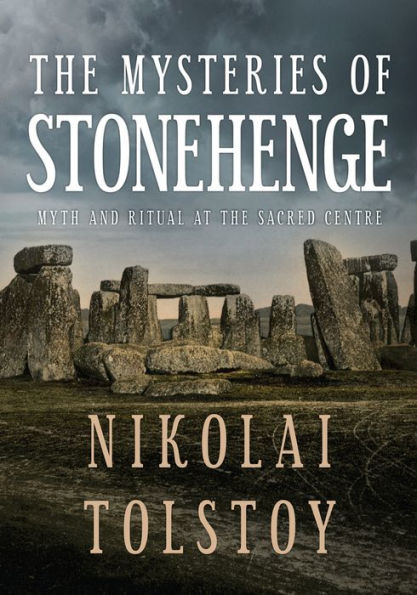The Mysteries of Stonehenge: Myth and Ritual at the Sacred Centre
Stonehenge presents us with one of the greatest archaeological mysteries from prehistory. With each new breakthrough in field research and technological innovation, the full scale and significance of the ancient site only deepens. In this new magisterial study by Nikolai Tolstoy, an essentially historical approach is used to try and explain the human story behind the implacable stones, and to enliven our understanding of Stonehenge through the fragments of myth and ritual that survive through Britain’s oral tradition. With years of patient study and an acquired fluency with the island’s many ancient languages, Tolstoy excavates a new theory from the layers of cultural sediment.Whilst admitting the latest archaeological evidence and research, Tolstoy aims to reconstruct the significant aspects of British pagan ideology and thinking from the pre-Roman era. By exploring the myths and rituals passed down alongside the material remnants of this lost civilisation, Stonehenge becomes illumined as the ‘sacred centre’ of Britain, the holy site at which the ancient peoples’ most profound beliefs – in the birth, destruction and eventual rebirth of their island itself – were celebrated.
1123479607
The Mysteries of Stonehenge: Myth and Ritual at the Sacred Centre
Stonehenge presents us with one of the greatest archaeological mysteries from prehistory. With each new breakthrough in field research and technological innovation, the full scale and significance of the ancient site only deepens. In this new magisterial study by Nikolai Tolstoy, an essentially historical approach is used to try and explain the human story behind the implacable stones, and to enliven our understanding of Stonehenge through the fragments of myth and ritual that survive through Britain’s oral tradition. With years of patient study and an acquired fluency with the island’s many ancient languages, Tolstoy excavates a new theory from the layers of cultural sediment.Whilst admitting the latest archaeological evidence and research, Tolstoy aims to reconstruct the significant aspects of British pagan ideology and thinking from the pre-Roman era. By exploring the myths and rituals passed down alongside the material remnants of this lost civilisation, Stonehenge becomes illumined as the ‘sacred centre’ of Britain, the holy site at which the ancient peoples’ most profound beliefs – in the birth, destruction and eventual rebirth of their island itself – were celebrated.
42.0
In Stock
5
1

The Mysteries of Stonehenge: Myth and Ritual at the Sacred Centre
608
The Mysteries of Stonehenge: Myth and Ritual at the Sacred Centre
608Hardcover
$42.00
42.0
In Stock

Product Details
| ISBN-13: | 9781445659534 |
|---|---|
| Publisher: | Amberley Publishing |
| Publication date: | 09/15/2016 |
| Pages: | 608 |
| Product dimensions: | 6.50(w) x 9.40(h) x 2.40(d) |
About the Author
From the B&N Reads Blog
